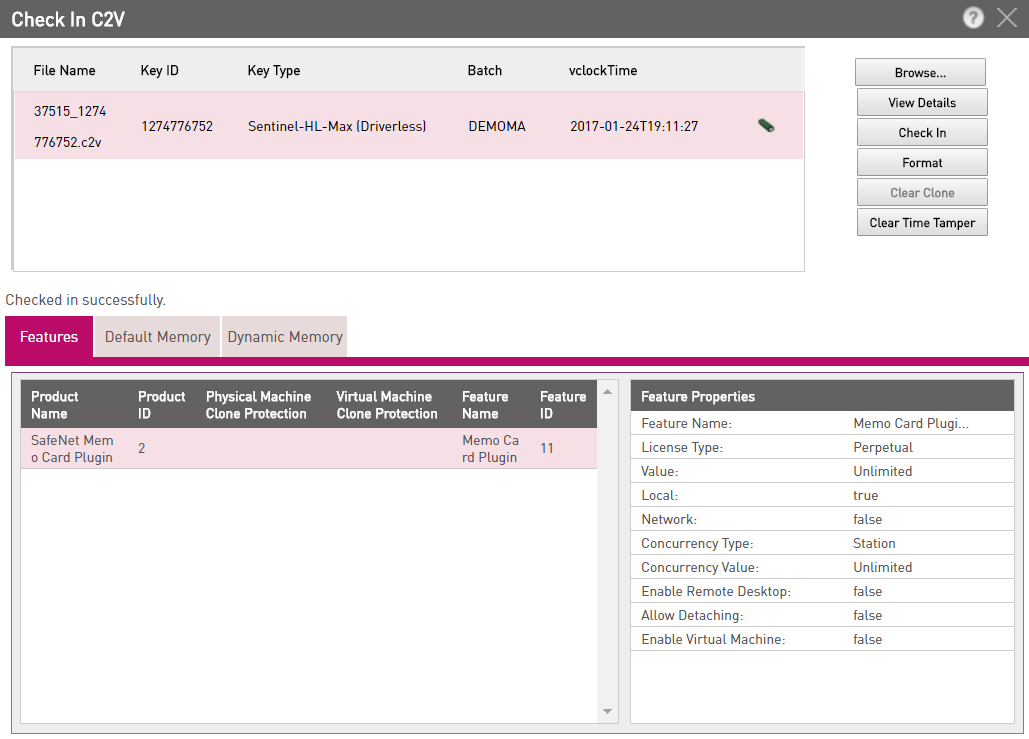
This section is relevant only for LDK Products/Entitlements.
The Check in C2V pop-up enables you to process and store the Sentinel security key information that is contained in a Customer-to-Vendor (C2V) file. This information can be used in connection with Protection Key Update orders. In addition, it enables you to format a key, or to generate a file that you can send to a Customer to format a key that is already deployed.

The C2V data is processed and the identification information of the keys is displayed, including the C2V file name, Key ID, Batch Code, and the locking type of the key. Also, the Check In button is enabled.
In this pop-up you can do the following:
Sentinel EMS is designed to lock the licenses for C2V files containing the clone detection flag when they are checked in. When the license is locked, on the Check In C2V pop-up window, the Clear Clone button is enabled. You need to use the Clear Clone functionality to unlock the license and check in the C2V file. Earlier this functionality was limited to Sentinel SL Legacy keys, however, the scope has been expanded to include Sentinel SL-AdminMode and Sentinel SL-UserMode keys also.
For the Sentinel SL key, when the C2V is sent from a cloned machine, the Clear Clone button is enabled and the C2V is prevented from being checked into the EMS database. It must be noted that the Clear Clone functionality works only when there is no major difference between the fingerprint and the original.
For additional information about working with C2V files from cloned machines, see Enabling Licenses that have been Disabled due to Clone Detection.
If previous updates are pending for a C2V file then you need to remove or apply these before applying new updates.
To remove/apply pending updates:
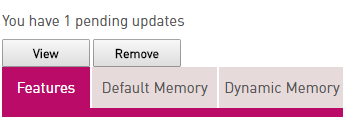
If previous updates are pending for the C2V file, "You have <#>pending updates" message is displayed. You will need to apply or remove the pending updates.
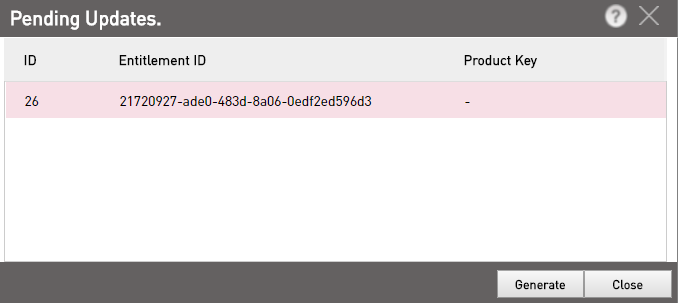
Formatting a key erases all license and memory data stored in the key and resets the data for that key in the EMS database. Formatting can be applied in the following ways:
Formatting a Sentinel protection key deletes all license data from the key.
When a Sentinel HL key is received from a customer, you need to check in the information, in order to make the data in the key available to Sentinel EMS. Next you can format the key.
When a C2V file is received from a Customer, you need to check in the information, in order to make the data in the file available to Sentinel EMS.
To complete the format operation, it is mandatory to apply the V2C file (Format V2C) generated in step 7. Refer Applying Format V2C File to a Sentinel Protection Key at the End-User Site: for more information. If the Format V2C is not applied, EMS will not allow you to apply any subsequent updates made to the protection key.
If you are unable to access the Format V2C file (for any reason) and want to apply subsequent key updates, then the latest C2V for the protection key needs to be checked in before proceeding further. Refer to Applying License Updates by Re-Generating Format V2C for more information.
If you are unable to access the previously generated Format V2C file (for any reason), then it needs to be re-generated. This is done by checking in the latest C2V for the key. If the Format V2C file is not applied, then subsequent updates made to the protection key also cannot be applied.
To apply subsequent license updates by re-generating and applying Format V2C:
Now, you can create protection key updates and apply them as well.
If the licenses for one or more applications that are locked to a Sentinel SL Legacy key are running on a cloned machine, those applications will be disabled; until the disabled licenses are cleared from the Sentinel SL Legacy key and new licenses are applied. This functionality has now been extended to include Sentinel SL-AdminMode and Sentinel SL-UserMode keys also.
To clear the disabled licenses, you can use the Clear Clone functionality during the Check in C2V process to generate a special V2C file.
To create a V2C file to clear a Sentinel SL key that has been disabled due to clone detection:
You will be able to generate the V2C only If the C2V is eligible for the Clear Clone operation. To learn more about C2V eligibility for the clear clone operation, refer Eligible C2V for Clear Clone Operation. On the contrary, if you receive an error message, you will not be able to generate the V2C; refer V2C Generation for Ineligible C2V.
When the license information stored on the Sentinel protection key is updated outside of EMS, the Synchronize button is displayed at the time of checking in the C2V file.
In this scenario, EMS is not aware of the changes made to the key, however, it can identify that the information stored on the C2V file is different from the current state of the database. Therefore, it prompts the user to synchronize the EMS database with updated license information on the C2V. Once the synchronization operation is performed, you will be able to check in the C2V file.
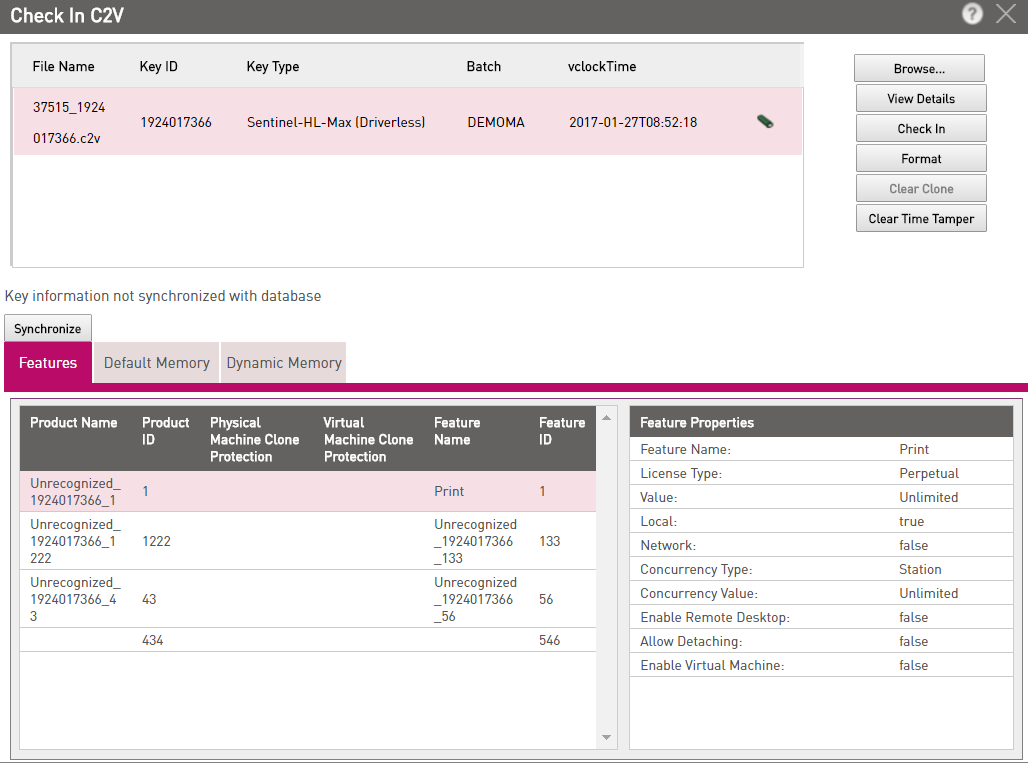
To synchronize the EMS database with the check in C2V:
You must select the C2V file that was updated outside of EMS.
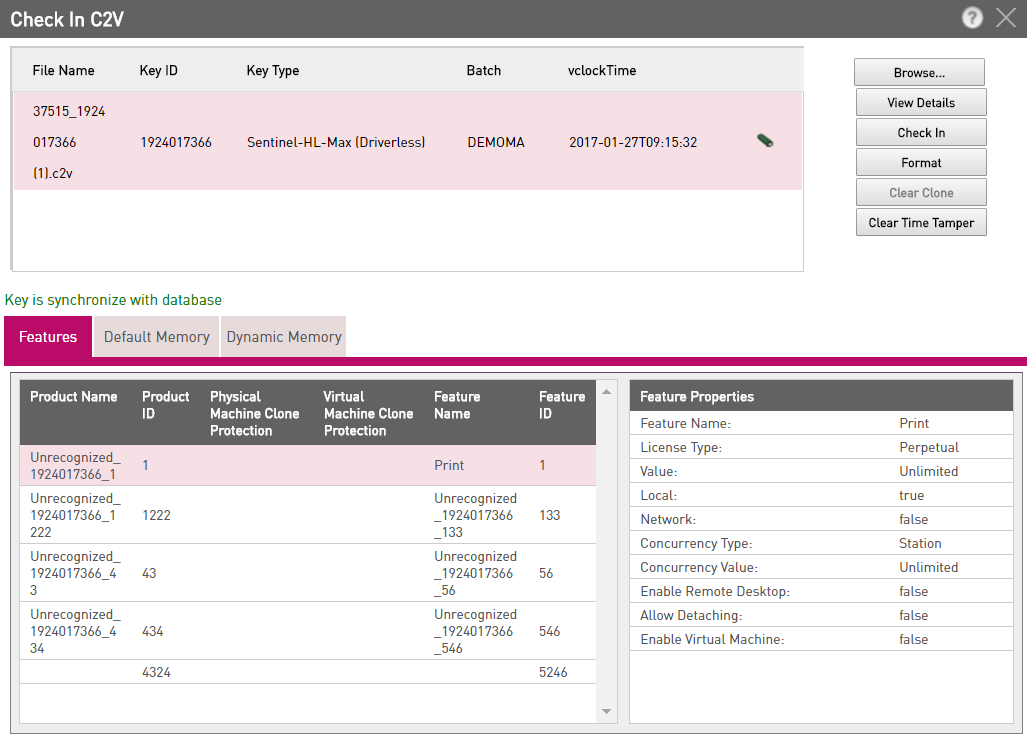
The database is synchronized. If you now try to check in the updated C2V file, the message displayed after Step 2 (refer above) does not appear and the file is successfully checked in.
For a C2V to be considered eligible for the clear clone operation, at least one of the items participating in the clone protection scheme should match between the reference fingerprint and the system fingerprint. In the event, that there is no match, an error message is displayed and the V2C cannot be generated.
The following tables shows the eligibility criteria that is used to determine whether the C2V is eligible for clear clone operation or not.
| Operating System | Physical Machine | Virtual Machine |
|---|---|---|
|
Windows |
Hard Disk UID or Motherboard UID or Secure Storage UID |
Ethernet UID or CPU ID or Motherboard UID or Secure Storage UID |
|
Linux |
Hard Disk UID or Motherboard UID or Secure Storage UID |
Ethernet UID or CPU UID or Motherboard UID or Secure Storage UID |
|
Macintosh (Mac) |
Hard Disk UID or Motherboard UID or Secure Storage UID |
Ethernet UID or CPU ID or Motherboard UID or Secure Storage UID |
|
Android |
CPU UID or Hard Disk UID or Android Serial Number or Secure Storage UID and Android First Boot |
Not Applicable |
After clicking the Clear Clone button, if you get an error message, it means that your C2V has failed to meet the minimum eligibility criteria for using the Clear Clone functionality. As an ISV, if you still want to allow the user to generate a V2C, you need to follow either of the following two methods.
For Method 1, steps 1-4 are performed by the end user and step 5 by the ISV. For method 2, steps 1 and 2 are performed by the end user and steps 3 and 4 by the ISV.
To generate a V2C file for an ineligible C2V:
To generate a V2C file for an ineligible C2V:
|
|
|||
| http://www.safenet-inc.com/Support | |||
|
|||